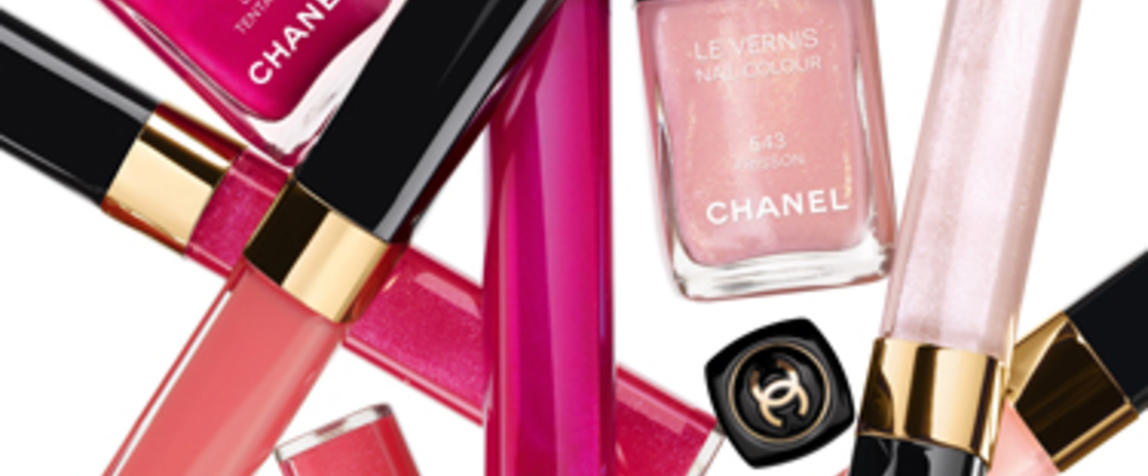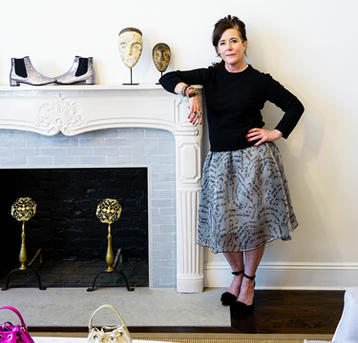Pharmacies increase lead as number one player in Australian beauty market; South African retailer buys Australia's Retail Apparel Group for $302.5 million; influencers now key to luxury brands; and Ulta Q1 sales jump 22.5 per cent to $US1.3 billion.
Pharmacies increase lead as number one player in Australian beauty market
Sephora may grab the headlines, but the French chain with 2300 locations worldwide has only opened eight stores in Australia over the past three years. Pharmacies are the number one power player in the Australian beauty market, says Roy Morgan Research, with a 19.1 per cent market share. Priceline leads the way by some distance, notes the researcher, and in the past six months over 840,000 Aussie women have made a beauty purchase in a Priceline store.
No mean feat. Over the past 10 years, the overall percentage of Australian women buying cosmetics in the average six month period has only inched up one per cent – from 50.5 per cent to 51.5 per cent. Yet from 2006 to 2016, the market share of pharmacies has increased from 15.1 per cent to 19.1 per cent. Of even more interest, according to Roy Morgan's consumer profiling tool Helix Personas, young women from the cashed-up, socially active Metrotech community are more likely than any other demographic to buy cosmetics from Priceline. Chemist Warehouse also scores well in this age and attitude silo.
Supermarkets fill the second-ranking slot with a market share of 12.1 per cent, says Roy Morgan. Coles is the leader in the race with nearly 600,000 Aussie women buying beauty products in the average six month period. Woolworths isn't far behind with 565,000 beauty fans selecting from its aisles. The major difference is that the Metrotech crowd are more likely to shop at Coles, while "outer-suburban, hard-working Aussie achievers"– the biggest consumers of beauty products in supermarkets – favour Woolworths.
Department stores have the third biggest market share – 8.1 per cent – followed by "Other", which includes Sephora and Mecca, a category which has lost market share over the past decade from 9.1 per cent to 7.7 per cent. The market share of discount department stores such as Target and Kmart has also slumped over the period from 7.1 per cent to 4.7 per cent.
Much has changed since 2006, says Michele Levine, CEO of Roy Morgan Research, from the proliferation of niche brands through the rise of social media and online retailers such as Adore Beauty. "Against this shifting backdrop, pharmacies remain the most popular place for Aussie women to buy makeup, with nearly one in five making their last cosmetic purchase at one. But like all retailers, they have had to adapt to the digital age to remain relevant: Priceline's Instagram feed, for example, is heavily cosmetics-focused, while their website has a dedicated Beauty School section containing videos and step-by-step lessons.
"Retailers need to be aware of the growing trend towards retailtainment rather than simple transaction", adds Levine. "Once again. Priceline is leading the way, and offers free personalised consultations with their resident beauty advisors".
South African retailer buys Australia's Retail Apparel Group for $302.5 million
David Jones and the Country Road Group were prime targets for South African retail heavyweight, Woolworths Holdings. Leading Johannesburg-listed retailer, The Foschini Group (TFG) has followed suit, acquiring the Retail Apparel Group (RAG) for $302.5 million. RAG has enjoyed double-digit growth over the past year and operates 400 stores nationwide, including the leading men's brands Tarocash, y.d, Connor and Johnny Bigg.
TFG have been active in the UK market over the past few years, acquiring Brit fashion brands Whistles, which ships to Australia and Phase Eight, stocked by David Jones. The company has a portfolio of 22 brands, including Fabiani and Next and owns more than 3000 stores worldwide across fashion, jewellery and sporting goods. Like Woolworths Holdings, TFG is looking to introduce some of its international brands to Australia.
Influencers now key to luxury brands
Only a few years ago, luxury brands were skittish about social media. Spruiking their beauty products, fashions, watches and more to millions seemed at odds with the industry's long-held emphasis on exclusivity. What's changed is the realisation that it's harder than ever to know who has real money and the global nature of social media has opened up new markets.
In a recent report – The New Face of Luxury – produced by Fashion and Beauty Monitor, key trends on successful collaborations with influencers were outlined to allay the fears of luxury brands still hesitant about social media. And many still are. Over 73 per cent of leading execs from the luxury beauty, fashion, watch and jewellery industries say that the biggest challenge remains trying to maintain exclusivity and aspiration on social media platforms.
Budget is also a major constraint restraining luxury brands from effective influencer partnerships. Things are changing fast, though. Nearly 75 per cent of respondents said they were active in influencer marketing, but 50 per cent revealed they had only started an influencer marketing program within the last 12 months. The early signs are good. Over 65 per cent of those surveyed said that their approaches to influencer marketing were effective and content collaborations were even more successful for 73 per cent of luxury brands.
Ulta Q1 sales jump 22.5 per cent to $US1.3 billion
Sephora and Ulta have carved up US beauty specialist sales, says Euromonitor, with 22.76 per cent and 26.7 per cent market shares, respectively. Ulta has played a huge part in revving up the fortunes of L'Oreal-owned NYX Cosmetics and IT Cosmetics and is shaping up to do the same for M.A.C. Ulta's net sales jumped 22.5 per cent to $US1.3 billion in the 12 week period to April 29th.
The average inventory per store also rose 11.2 per cent over the same period in 2016. A spike driven by the addition of 104 new stores and the opening of a new distribution centre in Texas to ensure high in-stock levels to fuel sales growth. "Our results reflect continued newness and innovation in merchandising, successful marketing programs, steady progress in our salon business and exceptional growth in e-commerce", says Ulta CEO Mary Dillon.
Snippets from the wires
- Douglas, Europe's largest perfumery chain, has become the leading player in the Italian market, following the acquisition of major beauty chains Limoni and Gardenia. Douglas already has 126 stores in Italy and will add 500 more after the buyout. The move will also lift the global number of Douglas stores across 19 countries to 2000.
- AmorePacific continues its ambitious growth program and will open its first European store for Sulwhasoo – its prestige skincare brand – in Galeries Lafayette in Paris in September.
- Cetaphil is celebrating its 70th birthday this year. The future looks even brighter with the rapid growth of the global dermo-cosmetic market as more consumers turn to gentle, clinically-proven products.
- One of the early fears of fragrance brands selling online was that it was impossible for consumers to smell the products. They needn't have worried with younger buyers, reveals an international study by mobile advertising company Teads. Less than 30 per cent of Millennials spritz on a perfume before purchase.




